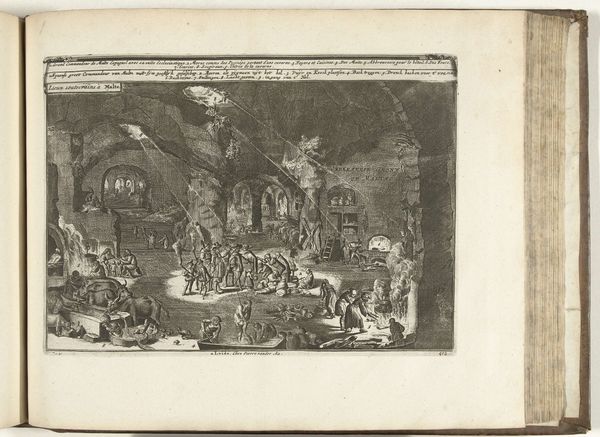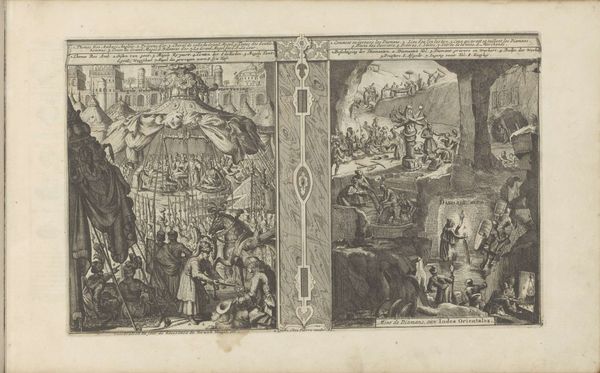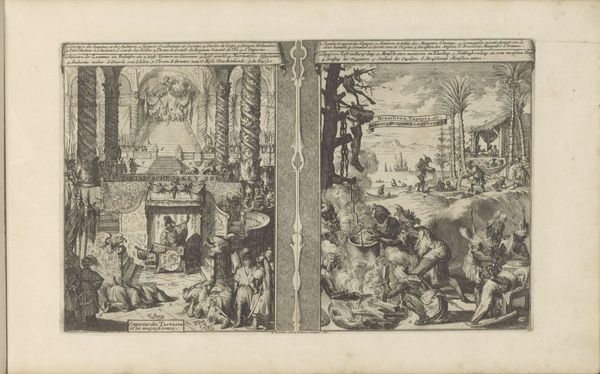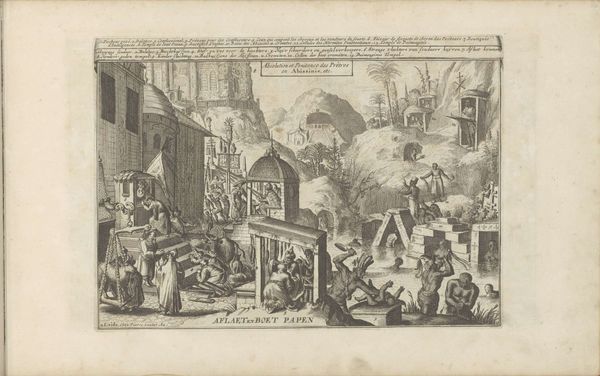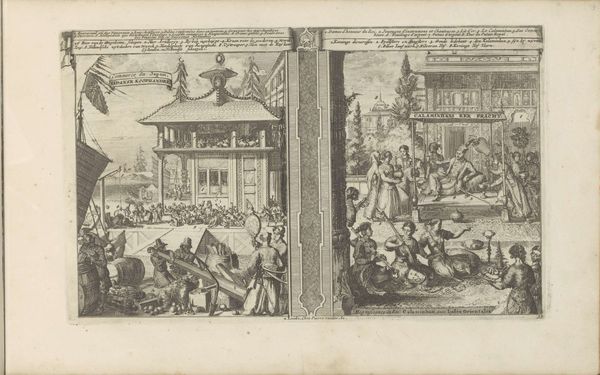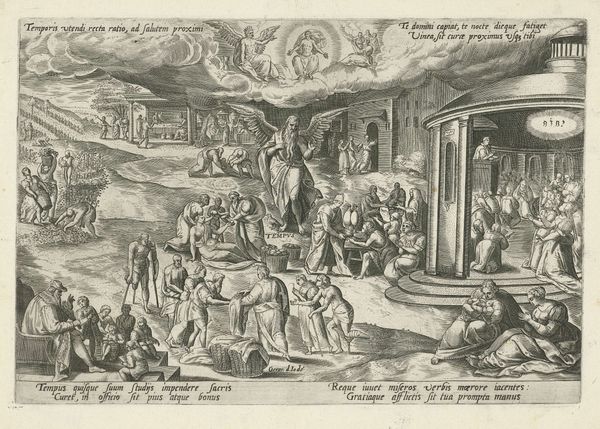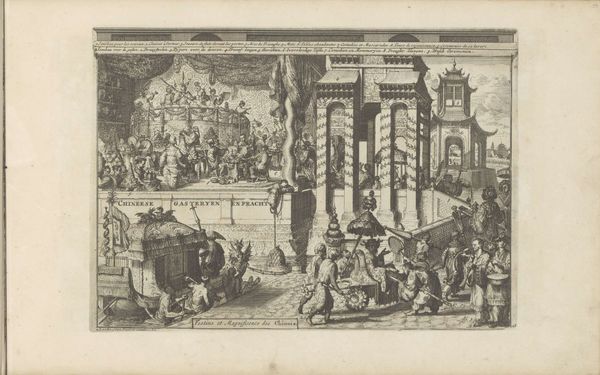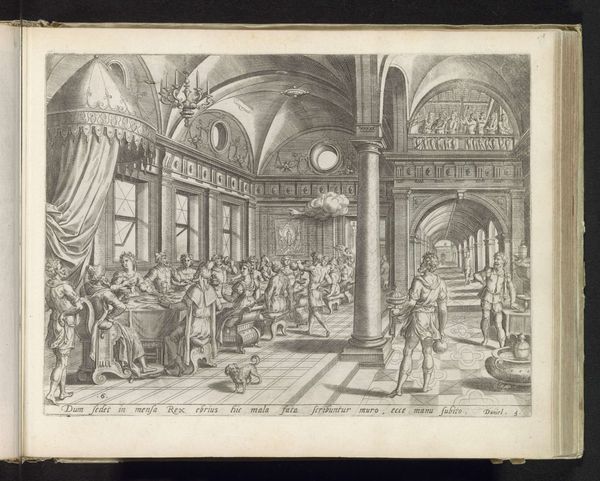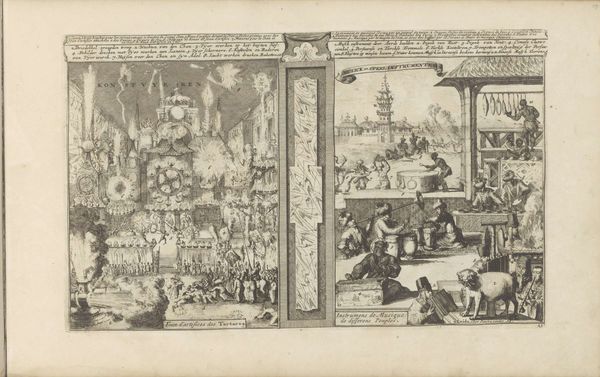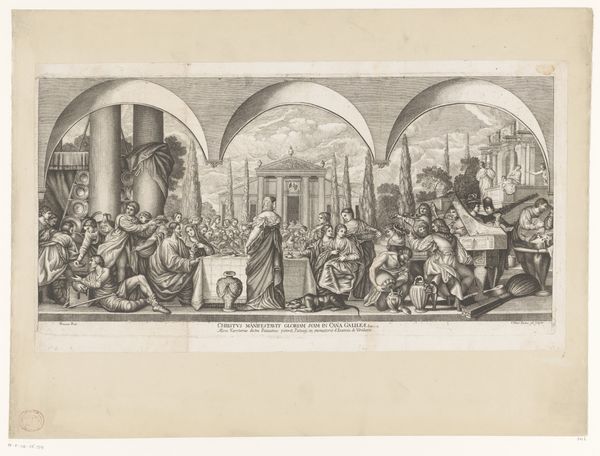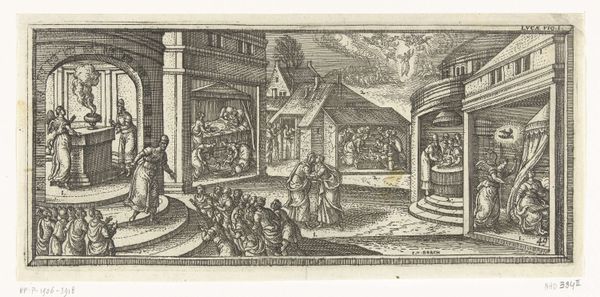
print, etching, engraving
#
baroque
# print
#
etching
#
old engraving style
#
landscape
#
pen-ink sketch
#
pen work
#
genre-painting
#
history-painting
#
engraving
Dimensions: height 213 mm, width 298 mm
Copyright: Rijks Museum: Open Domain
Editor: This is "Grotten in Malta," an etching and engraving by Romeyn de Hooghe, created sometime between 1682 and 1733. The print feels incredibly busy, like a snapshot of intense labor inside a cavernous space. What stories do you think this image is telling? Curator: It presents a romanticized view of labor and industry. Consider the politics of imagery: here, a Dutch artist depicts a Maltese workforce, not necessarily to document reality, but to create a spectacle for a European audience. How does this imagery potentially serve colonial power dynamics? Editor: Colonial power dynamics... So the “documentary” aspect is almost secondary? Is De Hooghe aiming for something beyond pure representation? Curator: Precisely. Look at the staging of figures, the dramatic lighting—isn't it reminiscent of theatrical scenes popular at the time? The print serves not just as a record but as a form of cultural commentary, subtly reinforcing perceived differences between the colonizer and the colonized through exoticism. Does the Baroque style contribute to this sense of spectacle? Editor: The contrast of light and shadow definitely adds to that sense. And that bustling scene almost makes it seem like the engraver is less focused on individuals and more focused on representing a societal operation... Curator: Indeed. Now, where would an image like this be displayed, and who was the likely audience? Considering social contexts changes the interpretation entirely. Editor: I hadn’t considered the potential viewership shaping the artwork itself. Viewing it in this new light makes it more fascinating. Thanks for highlighting this. Curator: Likewise! Thinking about art's social role enriches the experience.
Comments
No comments
Be the first to comment and join the conversation on the ultimate creative platform.
